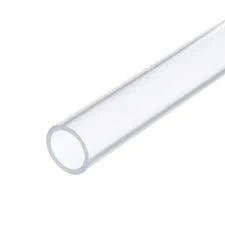окт . 05, 2024 01:12 Back to list
hdpe pipe cost
Understanding the Cost of HDPE Pipe Factors, Benefits, and Applications
High-Density Polyethylene (HDPE) pipes have gained significant popularity in a variety of industries, thanks to their robustness, flexibility, and durability. As industries increasingly seek efficient piping solutions for water, gas, and sewage applications, understanding the cost implications of HDPE pipes becomes a crucial consideration. This article will explore the factors influencing HDPE pipe costs, the benefits of using this material, and its common applications.
Factors Influencing HDPE Pipe Costs
1. Material Quality The quality of the polyethylene resin used to manufacture HDPE pipes plays a pivotal role in determining their cost. High-quality resins yield stronger and more durable pipes, which can withstand extreme conditions and heavy loads. While these premium pipes may have a higher upfront cost, they often provide long-term savings due to their longevity and reduced maintenance needs.
2. Pipe Size and Thickness The diameter and wall thickness of HDPE pipes directly affect their price. Larger diameter pipes typically require more material and thus are more expensive. Similarly, thicker pipes provide enhanced strength but come with added costs. Buyers must consider their application needs to select the appropriate size and thickness, balancing cost and performance.
3. Manufacturing Process The method used for manufacturing HDPE pipes can influence their overall cost. Advanced techniques, such as dual-extrusion and co-extrusion, may produce better-quality pipes but come with higher costs due to increased labor and energy inputs. Understanding the manufacturing process is essential for evaluating price differences across suppliers.
4. Market Demand and Supply Like any other commodity, the cost of HDPE pipes fluctuates with market demand and supply dynamics. Economic conditions, global oil prices (since polyethylene is derived from petroleum), and regional market trends can all impact pricing. Buyers should stay informed about market conditions to make timely purchasing decisions.
5. Transportation and Logistics Delivering HDPE pipes to the installation site is an important cost factor. The distance from the manufacturing plant, transportation modes, and any associated handling fees can add significantly to the final price. Efficient logistics planning can help mitigate these costs.
Benefits of HDPE Pipes
HDPE pipes offer numerous advantages that justify their cost
- Durability HDPE pipes are resistant to corrosion, chemicals, and UV radiation, which extends their lifespan and reduces the likelihood of leaks and failures.
hdpe pipe cost

- Flexibility The flexibility of HDPE allows for various installation methods, including trenchless techniques, which can save time and reduce labor costs.
- Lightweight Compared to traditional piping materials like PVC or metal, HDPE pipes are lightweight, making them easier to transport and install.
- Low Maintenance The inert nature of HDPE means it requires minimal maintenance, resulting in long-term cost savings for operators.
Applications of HDPE Pipes
HDPE pipes are versatile and used in multiple applications, including
- Water Supply Systems Their ability to handle high pressure makes HDPE ideal for drinking water supply lines and irrigation systems.
- Gas Distribution HDPE is resistant to corrosion and can withstand the chemical interactions associated with natural gas, making it suitable for gas distribution networks.
- Sewage and Drainage Due to their flexibility and strength, HDPE pipes are commonly used for sewage and drainage systems, ensuring effective waste management.
- Industrial Applications Many industries utilize HDPE pipes for transporting chemicals and other substances due to their excellent chemical resistance.
Conclusion
The cost of HDPE pipes is influenced by a multitude of factors, including material quality, size, manufacturing processes, market dynamics, and logistics. While their initial costs may be higher compared to traditional materials, the long-term benefits associated with durability, flexibility, and low maintenance make them a compelling choice for many applications. As industries continue to prioritize efficiency and sustainability, the demand for HDPE pipes is likely to grow, further influencing pricing trends. Understanding these factors will enable consumers to make informed decisions that align with their specific needs and budget constraints.
-
Premium Glossy PP Rigid Sheet – Durable & Versatile
NewsAug.07,2025
-
High-Quality HDPE Sheet | Durable Plastic Panels
NewsAug.06,2025
-
High-Precision PVC Rigid Sheets for Vacuum Forming | AI-Optimized
NewsAug.05,2025
-
Durable PVC-M Water Supply Pipes | 60-Year Life
NewsAug.04,2025
-
Premium HDPE Water Supply Pipes: Durable & Leak-Proof
NewsAug.03,2025
-
Premium PVC-M Water Supply Pipe - Durable & Efficient
NewsAug.02,2025

